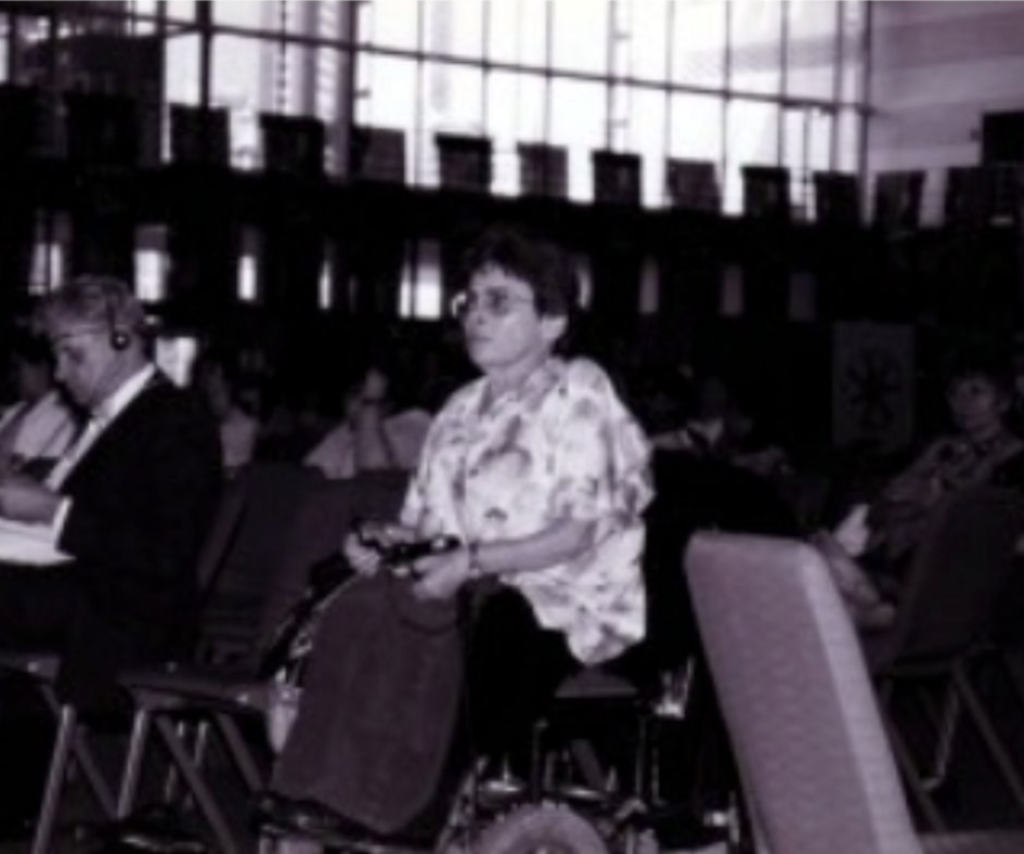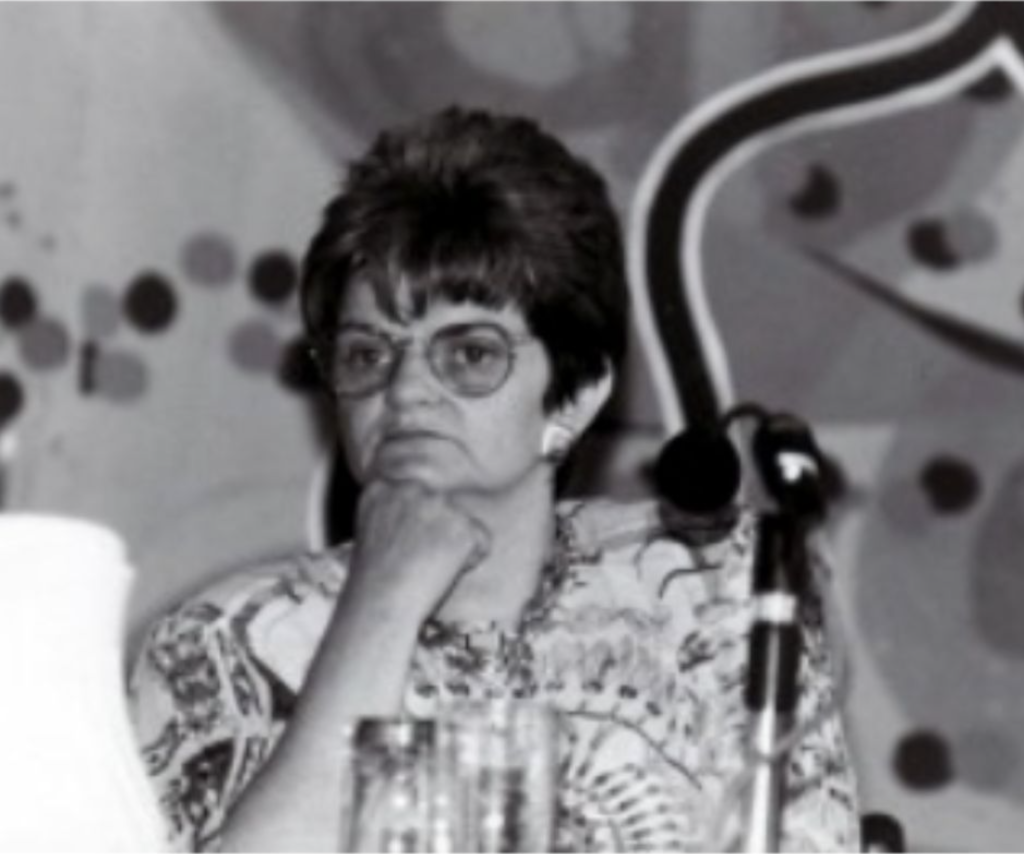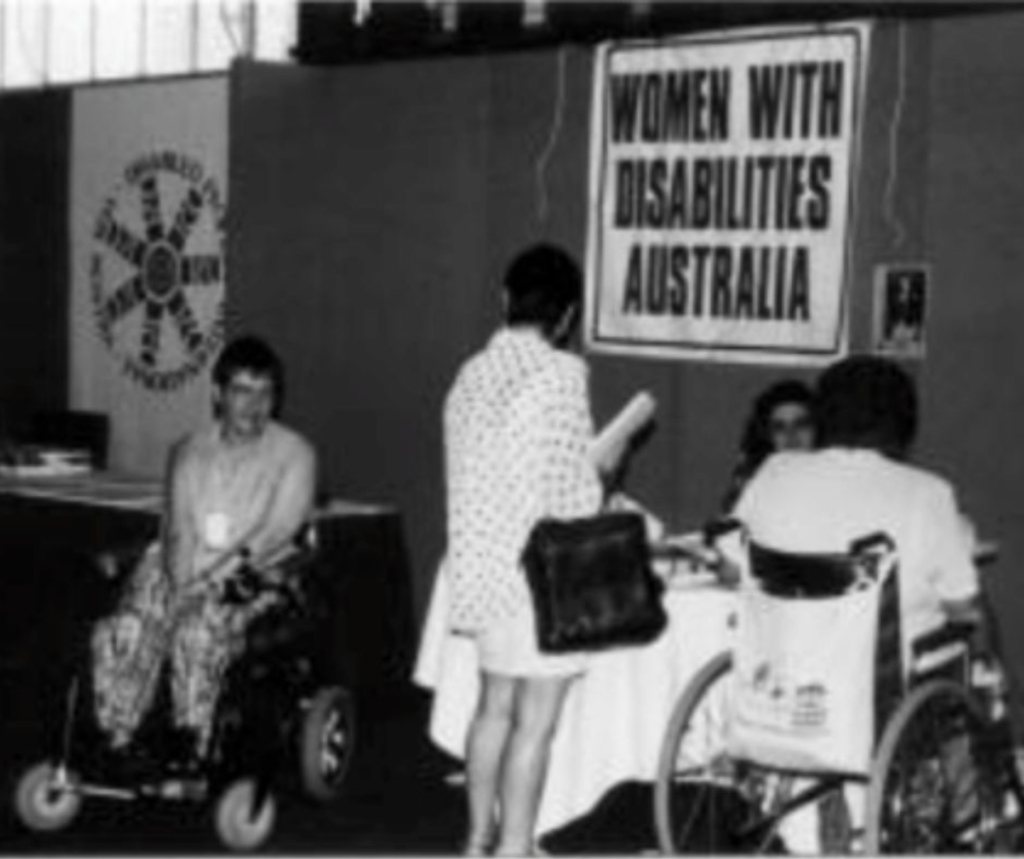The beginning of Women With Disabilities Australia dates back to the International Year of the Disabled Person in 1981 when Disabled People’s International (DPI) held its first World Assembly in Singapore. After participating in this assembly, thirteen Australians returned to Australia to set up an Australian branch of DPI.
Two years later, DPI Australia (DPIA) was established, and from the outset, was dominated by disabled men. Only 3 of the 11 members of its governance structure were women, and there was no mention of women or gender in DPIA goals and objectives. Key women members of DPIA were frustrated and disappointed at their unequal participation within DPIA. So, in 1985 they decided to establish their own women’s network within DPIA, known as the National Women’s Network (DPIA).

In the same year, DPI held its second World Assembly in the Bahamas. Australian women with disability representing DPIA were required to pay their own way to the Assembly, whilst male representatives of DPIA were funded to attend the Assembly. To protest against this, Australian women joined forces with their international colleagues and demanded that women be given the right to participate equally in all national organisations of people with disability. The DPI World Council was forced to hold an emergency meeting at which they agreed to establish a Standing Committee on the Affairs of Women with Disability.

Returning to Australia, the members of the National Women’s Network (DPIA) developed an Affirmative Action Plan which was ratified by DPIA and formally published in DPIA Policy Statements. However, DPIA was still dominated by men and did not implement the Action Plan. Its members also discouraged leadership by women with disability and refused to provide any funding or resourcing to the National Women’s Network.
In seeking a vehicle to effectively advocate on their own behalf, the Network passed a motion in 1991 resolving to develop their own organisation along feminist principles, get independent funding, and leave DPIA. It took a further three years to secure a small seeding grant from the Australian Government but in 1994 the Network changed its name to Women With Disabilities Australia (WWDA) and established a governance structure. On March 3rd, 1995 WWDA was incorporated as an independent organisation run by women with disability for women with disability.

Within a year of incorporating, WWDA had a membership of over 600 individuals and organisations. For the first few years, WWDA struggled with the challenge of an uncertain future as it was required by Government to re-apply for its funding every 6 months.
In 1998 after much negotiation, the Australian Government agreed to provide WWDA’s operational funding on an annual basis. For almost the next decade, WWDA’s funding remained at the same amount, with no guarantee of ongoing funding from one year to the next.
The organisation was initially governed by a Management Committee of 12 women with disability, representing the 6 Australian States and 2 Territories. The original WWDA Constitution required that each State and Territory be represented on the Committee and that the women representing these geographic locations be drawn from existing ‘groups or networks’ of women with disability. In practice, this model did not work well, because where they existed, the ‘groups’ were unfunded, operated on a voluntary basis, and relied on the goodwill of individual women with disability to drive them. Consequently, many of the women involved became burnt out and with no support, several of the groups floundered.
In 2000, WWDA undertook a major review of its governance structure and re-wrote its Constitution to better reflect the role and function of a national peak Non-Government Organisation (NGO) for women with disability. This was a difficult task for WWDA because it meant conceding that, with only one paid staff member, the organisation could no longer take responsibility for trying to establish and support State and Territory groups of women with disability. The re-written Constitution saw the removal of the clause requiring State and Territory representation on the WWDA Management Committee. Instead, the Committee was to be made up of women with disability who were full members of the organisation, regardless of their geographic location. It was considered more important that potential Committee members possessed the knowledge and skills required to manage a community-based NGO. The revamped Constitution also enabled WWDA to co-opt additional members onto the Management Committee if required. This model has worked well in practice and has given WWDA much more flexibility in being able to draw on the expertise of individual women to help the organisation meet its objectives.
Since this time WWDA has developed a critical mass of expertise on the needs of women with disability. It has concentrated and utilised the energies of women with disability as activists, researchers and service providers and engaged other organisations and individuals keen to advance the needs of women with disability. The organisation has grown and matured considerably in the past decade. It has moved from being a small group of women with disability concerned primarily with building individual confidence and self-esteem, to an international human rights organisation enabling and representing the collective interests of women with disability and committed to promoting and advancing their human rights. WWDA now has a strong and growing international presence and is seen as a leading voice in international disability, women’s and human rights debates. WWDA’s innovative programs have been critically acclaimed at national and international levels, and the organisation has been rewarded with a number of prestigious awards, including national and state violence prevention and human rights awards.
In late 2003, WWDA was formally invited by the French Government to apply for the French Republic’s Human Rights Prize for 2003. WWDA was one of only two Australian entries invited to apply for the Prize. Although WWDA did not win the Prize, the judges said:
“We found your action aiming at improving the condition of women with disability a very deserving one indeed……we congratulate your organisation for devoting so much efforts to such a worthy cause and wish you every success in your endeavours.”
In December 2001, WWDA was named the National Winner of the Australian Human Rights Award. The judges were impressed by the broad base of WWDA’s work and influence and the range of methods used to advocate for women living with disability, from lobbying to education. They said WWDA deserved ongoing recognition and was a valuable and visible organisation. They further stated:
“WWDA has achieved an enormous amount in a short period of time, working tirelessly on behalf of one of the most marginalised and disadvantaged groups in Australia. Areas in which it has worked assiduously include unlawful sterilisation of women and girls with disability, reproductive health, violence against women with disability, and leadership and mentoring. Although it has a domestic focus, WWDA has provided inspiration for women with disability all over the world, receiving letters of thanks from as far away as the Ukraine and the USA.”
WWDA’s ground-breaking work in the area of preventing violence against women with disability has seen the organisation awarded the Australian Heads of Government National Violence Prevention Award (1999), as well as a nomination for the United Nations Millennium Peace Prize for Women Award (2000). WWDA has also won the Australian Crime & Violence Prevention Award (2008) and the Tasmanian Women’s Safety Award (2008).
WWDA is currently funded for systemic advocacy and project delivery by the Australian Federal Government. At times, WWDA receives one off grants to implement specific projects and also receives small amounts from time to time from donations.
